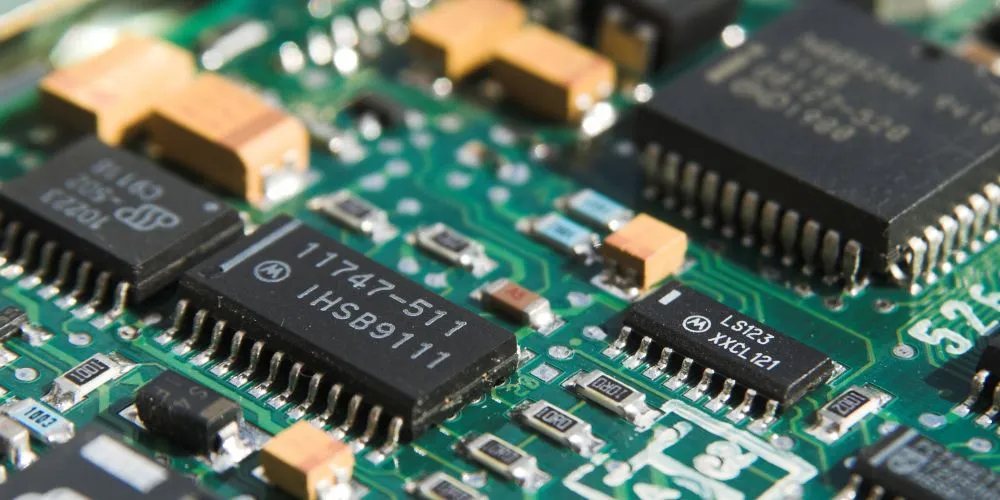Hardware is the physical foundation of all computing systems, crucially enabling the functionality of software applications, processing data, and supporting communication networks. From personal devices like smartphones and laptops to large-scale servers and data centers, hardware is the essential component that drives the digital world. This article delves into the various aspects of hardware, exploring its types, importance, and future trends.
Understanding Hardware
Hardware encompasses all the physical components of a computer system or electronic device. These components perform various functions, from simple calculations to complex data processing and storage.
Definition of Hardware
Hardware refers to the tangible, physical parts of a computer system or electronic device, such as the central processing unit (CPU), memory, storage devices, input/output devices, and networking components. Unlike software, which consists of the instructions and data that run on the hardware, hardware is the machinery that executes the software’s commands. Every device relies on hardware, from the smallest microcontroller to the most powerful supercomputer.
Types of Hardware Components
Hardware components are typically categorized into several types, each serving a specific function within a computing system. The primary types include:
- Processing Components: These include the CPU, which acts as the computer’s brain, and the graphics processing unit (GPU), which handles rendering images and videos.
- Memory Components: This includes volatile memory, like RAM (Random Access Memory), which temporarily stores data for quick access, and non-volatile memory, such as ROM (Read-Only Memory), which stores essential system instructions.
- Storage Components: Hard drives, solid-state drives (SSDs), and optical drives fall under this category, providing long-term data storage.
- Input/Output Devices: Keyboards, mice, monitors, and printers allow users to interact with the computer and receive output.
The Role of Hardware in Computing
Hardware is the foundation for all computing operations, providing the necessary infrastructure for running software applications and processing data. It is responsible for executing instructions from software, managing data storage and retrieval, and facilitating communication between devices. The software would have no platform to operate without hardware, making it an indispensable part of any technological ecosystem. The performance, reliability, and capabilities of hardware directly impact the overall efficiency and effectiveness of a computing system.
Key Hardware Components
The functionality of a computer system depends on several key hardware components, each playing a specific role in the overall operation of the system.
Central Processing Unit (CPU)
The CPU, often called the computer’s ” brain, ” is responsible for executing instructions and performing calculations. It interprets and processes instructions from software applications, coordinating the activities of all other hardware components. Modern CPUs consist of multiple cores, allowing them to perform multiple tasks simultaneously and significantly enhancing computing performance. The speed and efficiency of a CPU are measured in gigahertz (GHz), and higher speeds typically result in better performance.
Memory (RAM and ROM)
Memory is critical for the temporary and permanent data storage within a computer system. RAM (Random Access Memory) is a volatile memory that temporarily stores data the CPU needs to access quickly. It is crucial in determining the system’s speed and responsiveness, especially when running multiple applications simultaneously. On the other hand, ROM (Read-Only Memory) stores essential instructions needed for booting up the system and performing basic functions. Unlike RAM, ROM retains data even when the computer turns off.
Storage Devices
Storage devices store data long-term, ensuring information is available after the system is powered down. Traditional hard disk drives (HDDs) use spinning disks to read and write data, offering large storage capacities at relatively low costs. Solid-state drives (SSDs) are faster and more reliable than HDDs, as they use flash memory with no moving parts, making them more durable and efficient. Storage capacity is measured in gigabytes (GB) or terabytes (TB), with larger capacities allowing for more data storage.
Evolution of Hardware
Significant technological advancements have marked the evolution of hardware, leading to more powerful, efficient, and compact computing systems.
Early Computing Hardware
Early computing hardware was large, expensive, and limited in capability. The first computers, such as the ENIAC and UNIVAC, were room-sized machines that required extensive manual operation. These machines used vacuum tubes and punch cards for processing and data storage, making them cumbersome and slow by today’s standards. Despite their limitations, early hardware laid the foundation for future innovations, proving that machines could be used for complex calculations and data processing.
The Transition to Microprocessors
The development of the microprocessor in the 1970s revolutionized computing hardware, making computers more compact, affordable, and accessible. Microprocessors integrated the functions of a CPU onto a single chip, significantly reducing the size and cost of computing systems. This innovation paved the way for the personal computer (PC) revolution, bringing computing power to businesses, schools, and households. The microprocessor era marked a significant shift in hardware design, leading to exponential growth in computing power and the widespread adoption of computers.
Modern Hardware Innovations
Modern hardware has continued to evolve, driven by advancements in semiconductor technology, materials science, and design. Today, we see the widespread use of multi-core processors, solid-state storage, and high-speed networking components that offer unprecedented performance and efficiency. Innovations such as quantum computing, neuromorphic processors, and 3D printing of hardware components are pushing the boundaries of what is possible in computing. These advancements are enabling new applications, from artificial intelligence to virtual reality, and are transforming industries across the globe.
Challenges in Hardware Development
Despite the remarkable advancements in hardware technology, developers and manufacturers face several challenges that impact the design, production, and sustainability of hardware components.
Miniaturization and Heat Dissipation
As hardware components become smaller and more powerful, managing heat dissipation becomes a significant challenge. Miniaturization leads to more components being packed into a smaller space, which can result in overheating if not properly managed. Effective heat dissipation is essential to maintaining performance and extending the lifespan of hardware components. Techniques such as advanced cooling systems, heat sinks, and thermal management materials address these challenges but add complexity and cost to hardware design.
Material Limitations
The materials used in hardware production, such as silicon for semiconductors, have physical limitations that affect performance and scalability. As transistors become smaller, quantum effects and material defects can reduce efficiency and reliability. Researchers are exploring alternative materials, such as graphene and carbon nanotubes, which have the potential to overcome these limitations. However, transitioning to new materials involves significant research and development and retooling manufacturing processes, which can be costly and time-consuming.
Environmental Impact
The production and disposal of hardware components have significant environmental impacts, including resource depletion, energy consumption, and electronic waste (e-waste). The demand for new hardware drives the extraction of rare minerals and metals, leading to environmental degradation and pollution. Additionally, the disposal of outdated hardware contributes to e-waste, which is hazardous to the environment if not properly managed. Addressing these challenges requires focusing on sustainable manufacturing practices, recycling programs, and developing more eco-friendly materials.
Future Trends in Hardware
The future of hardware development is shaped by emerging technologies and innovations that promise to revolutionize computing and electronics.
Quantum Computing
Quantum computing is an emerging field that leverages the principles of quantum mechanics to perform computations far beyond the capabilities of classical computers. Quantum computers use qubits, representing multiple states simultaneously, allowing for parallel information processing. It could solve complex problems in cryptography, material science, and artificial intelligence that are currently intractable for classical computers. While still experimental, quantum computing represents a significant leap forward in hardware technology.
Artificial Intelligence and Hardware Integration
Integrating artificial intelligence (AI) with hardware drives the development of specialized processors, such as AI accelerators, optimized for machine learning and data processing tasks. These processors, including graphics processing units (GPUs) and tensor processing units (TPUs), are designed to handle the massive parallel computations required for AI applications. As AI continues to evolve, we can expect to see further advancements in hardware that enhance the performance, efficiency, and capabilities of AI systems, enabling new applications across industries.
Sustainability and Green Computing
Sustainability is becoming an increasingly important consideration in hardware development as organizations and consumers demand more eco-friendly products. Green computing initiatives focus on reducing hardware’s environmental impact through energy-efficient designs, sustainable materials, and responsible recycling practices. Future trends in hardware will likely involve the development of more energy-efficient components, the use of renewable materials, and the implementation of circular economy principles to minimize waste and environmental harm.
Conclusion
Hardware remains the backbone of modern technology, enabling the operation of computing systems and supporting the digital transformation of industries worldwide. From early computing machines to the latest innovations in quantum computing and AI, hardware has continually evolved to meet the demands of an increasingly digital world. Despite the challenges faced in hardware development, such as miniaturization, material limitations, and environmental impact, the future of hardware is bright, with emerging trends promising to revolutionize how we interact with technology. As we move forward, the continued advancement of hardware will play a crucial role in shaping the future of computing and driving innovation across all sectors of society.










